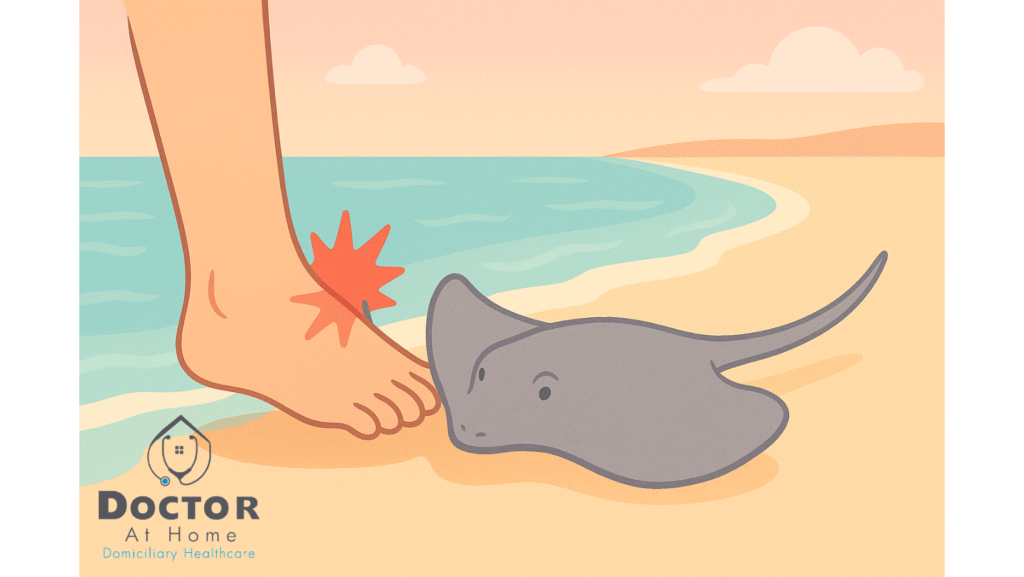

A stingray sting causes intense pain and, in rare cases, serious complications if not treated promptly. In Mexico, most incidents occur along the Pacific and Caribbean coasts. This guide covers venomous species, the top 3 states with highest incidence, stingray vs. manta ray, symptoms, treatment, prevention, and a call to action to ensure your safety with friendly professionalism.
Venomous Rays on Mexican Beaches?
All marine stingrays have one or more dorsal barbs that inject venom when stepped on or handled. Other venomous beach creatures include sea urchins, scorpionfish, and jellyfish.
- Local venom effects: intense pain, swelling, and blistering at the wound site.
- Life-threatening potential: while most stings are limited to local symptoms, on very rare occasions—especially in allergic individuals or with deep punctures—the venom can trigger severe systemic reactions that, without prompt care, may endanger life.
Top 3 Mexican States by Stingray Sting Incidence
Based on hospital data and lifeguard reports, the highest number of cases are found in:
- Baja California Sur (Cabo San Lucas, La Paz)
- Quintana Roo (Cancún, Playa del Carmen)
- Sinaloa (Mazatlán, Los Mochis)
Shallow waters and heavy beach traffic increase human-ray interactions in these areas.
Stingray vs. Manta Ray
Many people search for “manta ray sting,” but manta rays (Manta and Mobula species) lack venomous barbs and so cannot sting. True stingrays (families like Dasyatidae) have one or more tail spines that inject venom defensively. Knowing this distinction helps you use the right terms and understand real risks.
Stingray Sting Symptoms
- Immediate sharp pain at the contact site.
- Swelling, redness, and possible bleeding or blistering.
- Burning sensation.
- Systemic signs (rare): nausea, sweating, dizziness, or rapid heartbeat in severe reactions.
- Infection risk if fragments remain or the wound is not cleaned properly.
Treatment and First Aid
Beachside First Aid
- Rinse with seawater and mild soap to remove debris and venom.
- Hot water immersion (104 °F/40 °C) for 30–90 minutes to neutralize venom and reduce pain.
- Disinfect and apply a sterile dressing.
When to Seek Professional Care
If pain persists more than 1–2 hours, signs of infection appear, or pain radiates toward groin/armpit, schedule a home medical visit for:
- Wound depth assessment.
- Administration of pain relief and anti-inflammatories.
- Antibiotic therapy and drainage if required.
Preventing Stingray Stings
- Wear sturdy water shoes in shallow water.
- Use the “stingray shuffle” to warn rays of your approach.
- Avoid swimming at dawn or dusk, when stingrays feed.
- Obey local beach advisories and warning signs.
Conclusion
A stingray sting can be effectively managed with prompt first aid and professional care. Differentiating stingrays from manta rays clears up confusion, and knowing the rare life-threatening potential ensures you stay safe.
Book your home medical visit now and get expert care without leaving your home.
